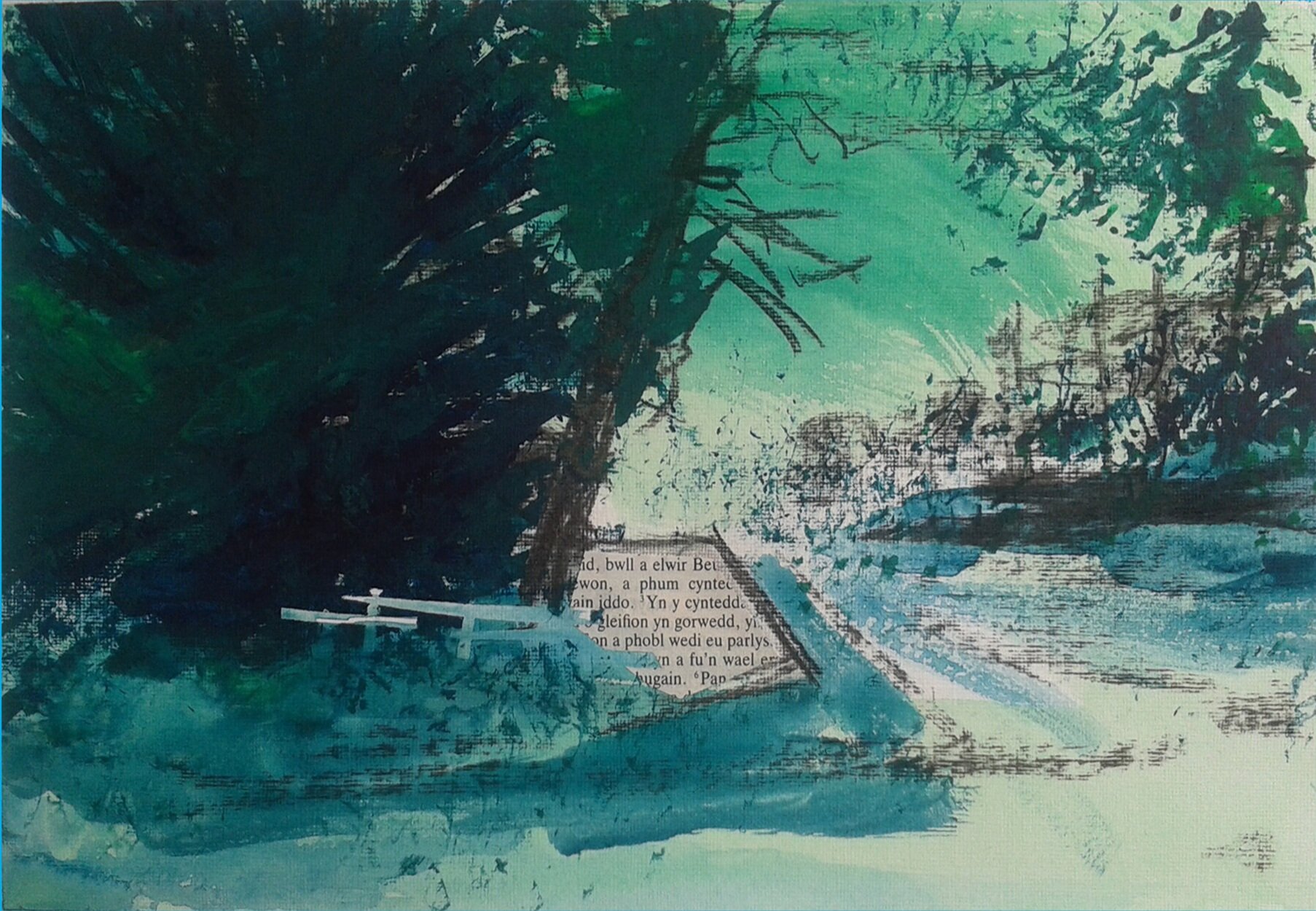Holy Wells
I became fascinated in the legends of the ancient holy wells of Wales and decided to create a series of sketches and watercolours. My wife, Helen, and I toured Wales hunting them out (some of them are well marked, but others almost totally lost from view) and collected ‘holy’ water to use in the paintings. Most of the series are now in the collection at The National Library of Wales, Aberystwyth
This substantial stone baptistry, once called ‘The Welsh Bath’, is found in the churchyard at Llandyfan and used to be a meeting place for the non-conformists of the area before they had their own chapels. It once had a reputation as a medicinal spring and the waters were said to cure paralysis.
St Non’s Well that sprang into life at the spot where St David was born. St Non was David’s mother and the well is still a popular pilgrimage site.
St Mary’s Well at Llanfair Caereinion in Montgomeryshire. The restored well is behind the parish church overlooking the river Banwy.
St Bernards Well, now little more than a boggy area in a Carmarthenshire farmyard.
St Anne’s Well or The Virtuous Well Trellech, Monmouthshire. One of several wells in Wales where rags are found tied to the branches of trees nearby, symbolising prayers or wishes. It is one of the three wonders of Trellech, the other two being Harold’s Stones and the motte and bailey known as Tump Terret. The well’s waters were once used to treat scurvy and colic.
St Cenydd, Gower Peninsular. The well is found on the village green opposite the parish church at Llangennioth at the western end of the Gower Peninsular. St Cenydd was, supposedly, a baby who was born disabled and put in a basket and left in the sea. He was however washed ashore on a Welsh island and fed by seagulls and angels. He became a saintly hermit.
Ffynnon Beris, Llanberis, Gwynedd. The well is in the garden of a private house in a spectacular setting in North Wales. At one time fish were kept in the pool and if they appeared as a patient was bathing it was taken as a good omen. The waters were beneficial for those suffering from scrofula or rickets.
Ffynnon Gwenlais, Llandybie, Carmarthenshire. The spring is the source of the River Gwenlais and emerges from under an ancient Yew Tree. There might have been a chapel there once, but today the only structure is a weir holding the waters in a pond. One legend suggests that the waters of the well first emerged when a virgin was murdered on the spot.







